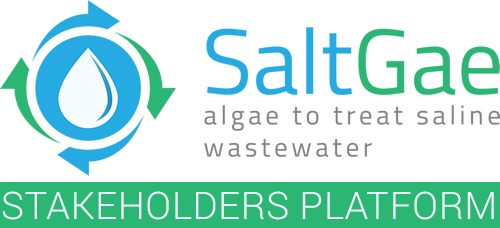Whilst the SALTGAE project will develop and demonstrate a techno-economically viable solution for the treatment of saline wastewaters; such novel solutions for water treatment are unlikely to realise their full potential unless key barriers to innovation are also addressed thereby facilitating take-up and investment.
Many of these barriers are the result of fragmentation, poor communication, limited knowledge and lack of a common vision and strategy both across vertical and horizontal value chains. Many of these barriers are common to novel technologies implemented across the water and wastewater treatment sectors.
Here the SALTGAE project will develop and demonstrate a methodology for addressing these challenges through: the mobilisation of key stakeholders; establishment of an education and communication platform; undertaking of an innovation system assessment; definition of a vision, strategy and roadmap; and creation of a plan for implementation and change.
Our ambition is that SaltGae solution will address first of all the key innovation barriers already identified by the EIP for Water:
Fragmentation of stakeholders; poor communication or alignment of policy, legislation and regulation; low priority on the political agenda; incomplete understanding of the innovation barriers.
- facilitate communication by mobilising all key stakeholders around a common high impact challenge (saline wastewater) and opportunity (algae biomass);
- facilitate understand and identification of innovation barriers across sectors, value chains and stakeholders by fully assessing and communicating the innovation landscape;
- inform, facilitate and drive alignment in policy and regulation by educating all stakeholders about the value chain requirements and impacts we will;
- help prioritise water within the political agenda and influence policy and legislation by acting together within a platform that mobilises a critical mass of stakeholders and supporting information and evidence.
Target performance: Stakeholders mobilised: at least 5% of the total stakeholders contacted and informed (ca. 30k) = ~1,5k
User perception of WasteWater as a cost to be minimised rather than a resource to be valorised.
SALTGAE will help to change user perception through education and demonstration of the SALTGAE technology.
We will educate user stakeholders concerning the potential value of their wastewaters by describing the value and valorisation options Associated with document Ref. Ares(2016)1791379 – 15/04/2016 689785-2 SALTGAE – Part B 30 for each component.
We will show these users how this value may be realised through the SALTGAE and related technologies and how this has been successful realised for other industries, such as mining, agriculture etc…
Target performance: User Stakeholders educated: at least 10% of the total stakeholders mobilised (ca 1,5k) = ~150
Negative consumer/industry perception of reclaimed product streams and recycled water
We will educate stakeholder consumers and industry about the target production processes and how these result in high value product streams meeting (or exceeding) the same quality standards used for conventional products.
We will demonstrate these quality standards during the project.
Target performance: Stakeholder consumers and industry educated: >10% of the total stakeholders mobilised (ca 1,5k) = ~150
Access to finance and investment, risk adverse nature of the sector, poor alignment of pricing methodologies and incentives
We will not only demonstrate to users and investors the techno-economic viability of the SALTGAE solution; but also how the existing value chains and markets facilitate its take-up and commercialisation.
By educating users and investors and providing access to key stakeholder for implementation SALTGAE will be able to build confidence and drive for financial investment.
Furthermore by bring together pan-European regulators within a framework that assesses the requirements and impact of existing regulation, we believe SALTGAE will drive alignment in pricing methodologies and practices.
Target performance: Users and investors educated: at least 15% of the total stakeholders mobilised (ca 1,5k) = ~225
Increased complexity of water treatment processes creating barriers to user take-up
Whilst the SALTGAE solution will incorporate novel process monitoring and control systems to automate many of the complex control functions, this does not overcome the user perception of complexity.
Here the SALTGAE project will not only enable users to gain hands-on experience in operation of the technology via the three demonstration sites (to demonstrate ease of operation), but will also provide a support structure of education / training materials and service providers to facilitate take-up and operation.
In particular it is envisaged that support services for facility operation will be reinforced by remote process monitoring technologies.
Target performance: Knowledge transfer platform users: at least 10% of the total stakeholders mobilised (ca 1,5k) = ~150
 Slideshare
Slideshare
